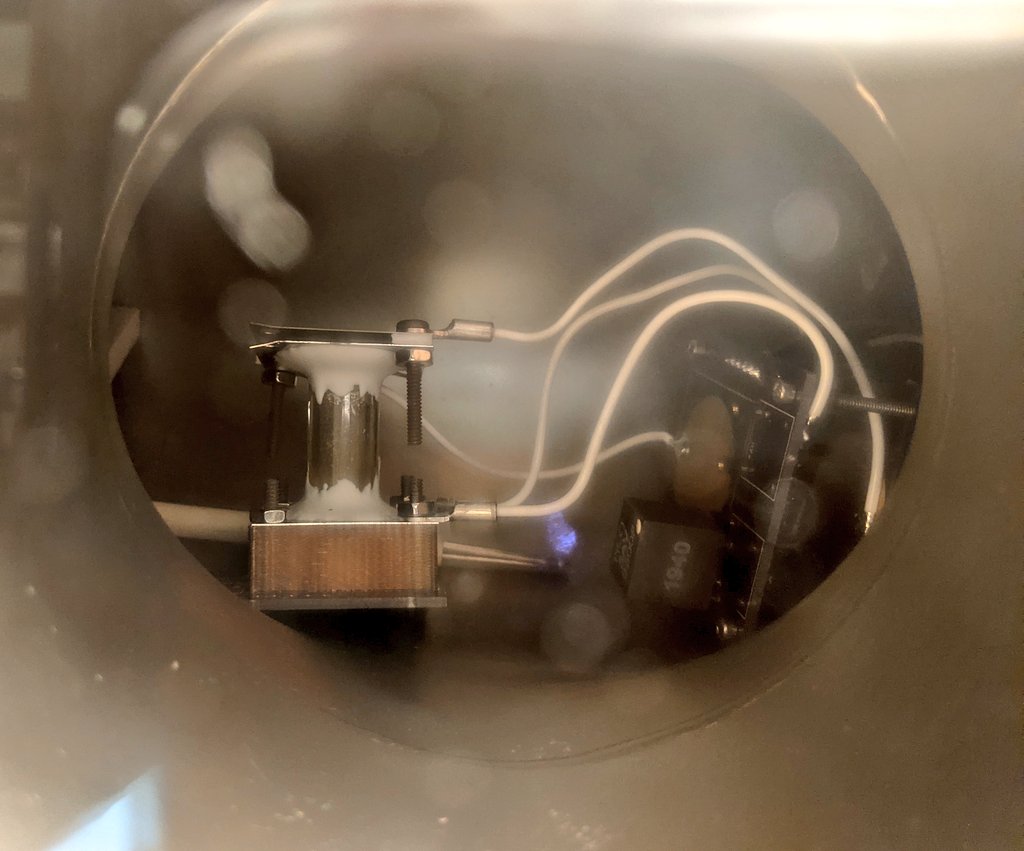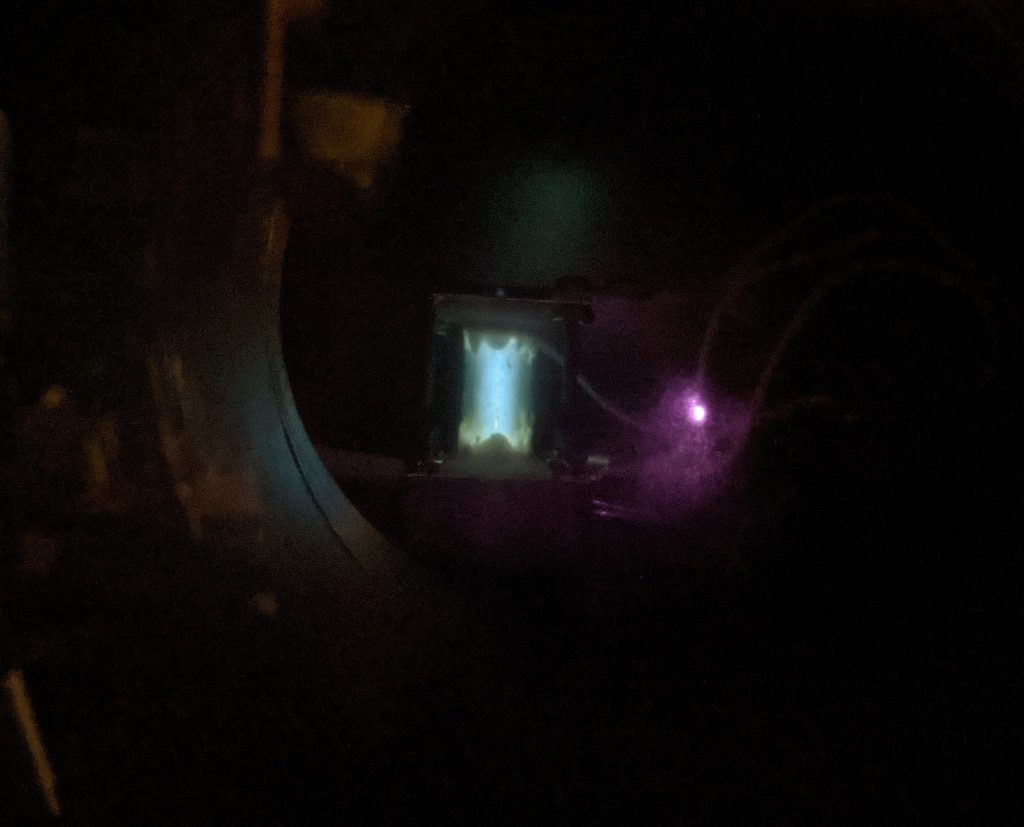Last night I ran the fourth sublimation and glow discharge ionization test of Adamantane in vacuum for the AIS ADAMANT Series development. Reference to prior test recaps can be found below:
For this test, the system was set up with the same configuration as Test 3, however the polarities on the plates were changed. In this test, a positive discharge was established between the bottom (grounded) and center plates (+HV), and a negative voltage applied to the uppermost extractor plate. Whereas Test 3 aimed to look at operation similar to a hollow-cathode neutralizer, this test aimed to extract ions from the plasma. Since I also couldn’t line up the Faraday cup with the vertically oriented test cell, I floated to the chamber and used the chamber itself as one large collector, with a wire connected to the micro-ammeter to read any beam current extracted from the test cell. Finally, the test would be conducted without any heater power applied, relying on passive sublimation in vacuum.
The test cell was rewired, loaded with fresh Adamantane, and placed into the vacuum chamber for testing. Pumpdown was much more of a challenge than prior tests, however the pressure finally reached a similar testing level of 7.5×10^-4 Torr prior to starting.

Once at vacuum, positive HV was applied to initiate the discharge, and negative HV applied to the extractor. A stable pale green plasma discharge was initiated at less than 1W of power. Background temperature during the test started at 11C, eventually settling to 15C by the end of the test. Unlike the prior test however, there was no visible plume or beam extraction. However, I was in fact reading current on the galvanometer.

With only the +HV discharge power applied, I read a current of -100uA. With just the -HV extractor plate power, I got +20uA. However, with both +HV discharge power and -HV extractor power, I read -80uA of current. Adjusting both supplies, I could actually achieve a balanced net current of 0uA reading on the galvanometer.
At the relatively high pressures of 7×10^-4 Torr to 1×10^-3 Torr, accurate beam readings isn’t very accurate great since there are background gas effects. Discharge glow and current reading tracked very smoothly with applied power. Problem is, I don’t really know what I was reading and why.
There are a few hypothesis that can be deduced from these observations. One is that I was indeed reading some extracted beam current, which tracked with the opposite polarity applied. For the +20uA beam, this made sense for ion extraction given that the -HV extractor voltage was applied. However, it is unclear for the -100uA current when applying the +HV power whether I was seeing electron beam current, or negative ion beam current. While there is very little data on Adamantane discharges in literature, there have been some hints that there may be negative ion formation within the plasma as well. This could be immediately verified with something like time of flight analysis.
Finally, at the end of the test, I increased the discharge power to the full 2W, achieving a very stable and brighter plasma discharge. Interestingly, this discharge had a marked shift in color from the lower power discharge earlier in the test.

Overall, this proved to be a very interesting test. I was able to successfully extract a positive ion beam, however interestingly I was also able to extract some negatively biased beam, which occurred at a significantly higher output than the positive beam, even with equivalent accelerating voltages. Adjusting both supplies, a charge balance was able to be achieved. This is very convincing moving forward for beam extraction as well as charge neutralization, and definitely merits further investigation!
